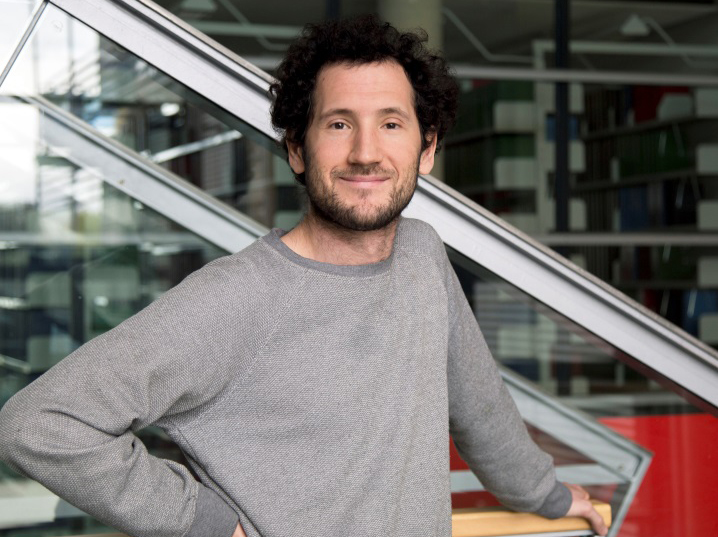Otto Hahn Medal for Jaime Agudo-Canalejo

Dr. Jaime Agudo-Canalejo © Max Planck Institute of Colloids and Interfaces
The supramolecular architecture of the living cell is based, to a large extent, on fluid membranes that consist of bilayers of lipid molecules. These membranes provide the interfaces between different cellular compartments, and separate the inside from the outside of the cell.
The membranes are fluid and extremely thin: their thickness is only about a millionth of a millimeter! As a consequence, the membranes have unusual fluid-elastic properties: they are very flexible and can easily adjust their shape in response to stimuli or changes in their environment.
In his doctoral thesis, which Jaime Agudo-Canalejo did at the Max Planck Institute of Colloids and Interfaces in the department of Reinhard Lipowsky, he elucidated the complex morphological behavior of these membranes and significantly advanced the theory of curvature elasticity.
A particularly interesting and important example for membrane remodeling is provided by endocytosis, the process by which small nanoparticles enter human cells. These nanoparticles might be natural viruses that are infecting the cell, or synthetic particles carrying a medical drug, so understanding this process is of high biomedical importance.
During endocytosis, the membrane bends around the particle until the particle is completely engulfed: The particle then ends up inside the cell, enclosed by a membrane coat. Using a theoretical model of membrane elasticity, Jaime Agudo obtained a quantitative description of how endocytosis is enhanced or inhibited depending on the size of the particle and on the so-called spontaneous curvature of the membrane, thereby explaining previous experimental observations.
The model also provides insight on how to replicate the process of endocytosis in giant vesicles, synthetic membrane systems that mimic the behavior of real cells and provide important modules for synthetic biology.
Besides endocytosis, Agudo has studied other membrane remodeling processes, such as the formation of nanotubes in giant vesicles exposed to asymmetric environments; or the formation of narrow membrane necks in biological and biomimetic membranes, which is relevant to essential cellular processes such as cell division or autophagy.
Otto Hahn Medal
The Max Planck Society has honored up to 30 young scientists and researchers each year with the Otto Hahn Medal for outstanding scientific achievements since 1978. The award comes with a monetary sum of 7500 euros as recognition. The prize is intended to motivate especially gifted junior scientists and researchers to pursue a future university or research career. Since 1978, more than 910 scientists and researchers have been awarded the Otto Hahn Medal. The award is presented during the general meeting in the following year.
Media Contact
All latest news from the category: Awards Funding
Newest articles

Properties of new materials for microchips
… can now be measured well. Reseachers of Delft University of Technology demonstrated measuring performance properties of ultrathin silicon membranes. Making ever smaller and more powerful chips requires new ultrathin…

Floating solar’s potential
… to support sustainable development by addressing climate, water, and energy goals holistically. A new study published this week in Nature Energy raises the potential for floating solar photovoltaics (FPV)…

Skyrmions move at record speeds
… a step towards the computing of the future. An international research team led by scientists from the CNRS1 has discovered that the magnetic nanobubbles2 known as skyrmions can be…





















